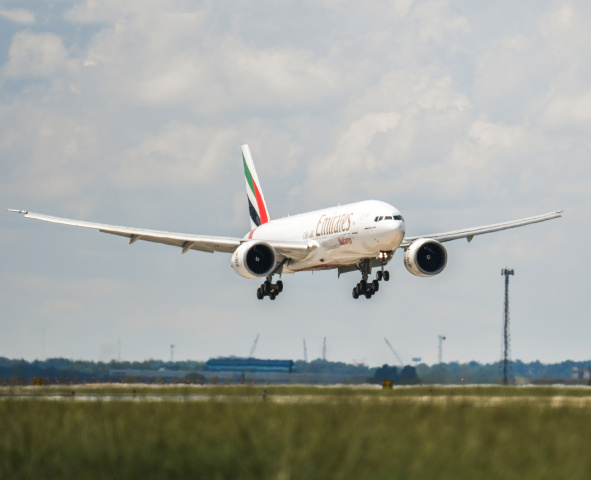Emirates SkyCargo boosts Afghanistan freight capacity using technology
Emirates Flight Operations has developed a new navigation technique that allows the airline to carry additional cargo into Kabul International airport, reports AJOT.
The innovative missed-approach procedure developed by the airline has replaced an older technique that required cargo bound for Kabul to be offloaded in Dubai during low-cloud or poor visibility weather conditions at destination.
The new solution has enabled Emirates SkyCargo to carry an additional 250 tons of cargo into Kabul during low-cloud conditions in the first three months since it was adopted.
Emirates operate a daily flight into Kabul International airport on its Boeing 777-300ER aircraft.
In addition to increased facilitation of trade to and from Afghanistan, the procedure has also resulted in more streamlined cargo operations to Kabul, increased customer satisfaction, and enhanced fuel efficiency.
Kabul airport is situated in a wide valley at an elevation of 5,800 feet and is surrounded by mountains that are over 11,000 feet tall.
The airport has a number of constraints associated with it because of the challenging terrain, Air Traffic Control (ATC) and other security requirements.
Kabul airport’s primary Runway 29 has two established missed-approach procedures with one of them requiring that an aircraft be able to climb at a steep angle when cloud cover is lower than 1,200 feet.
Previously, whenever meteorological reports predicted cloud cover below this level at Kabul airport, cargo was offloaded in Dubai to make the aircraft lighter to ensure that in the event the aircraft had to execute a missed-approach at Kabul airport, it could achieve the required climb gradient.
However, this measure often resulted in cargo not arriving on time at Kabul leading to other associated costs for both Emirates as well as the customer.
In order to optimize cargo loads without compromising on safety, Emirates Flight Operations Support developed a new missed-approach navigation procedure with an easier climb gradient for Kabul airport’s Runway 29 taking advantage of the Boeing 777 aircraft’s superior navigational accuracy.
The team worked with a specialist flight design agency, DFS Aviation Services, with regulatory credentials to analyse the terrain around the airport and develop a new procedure that could be implemented without delays in working with the local ATC.














